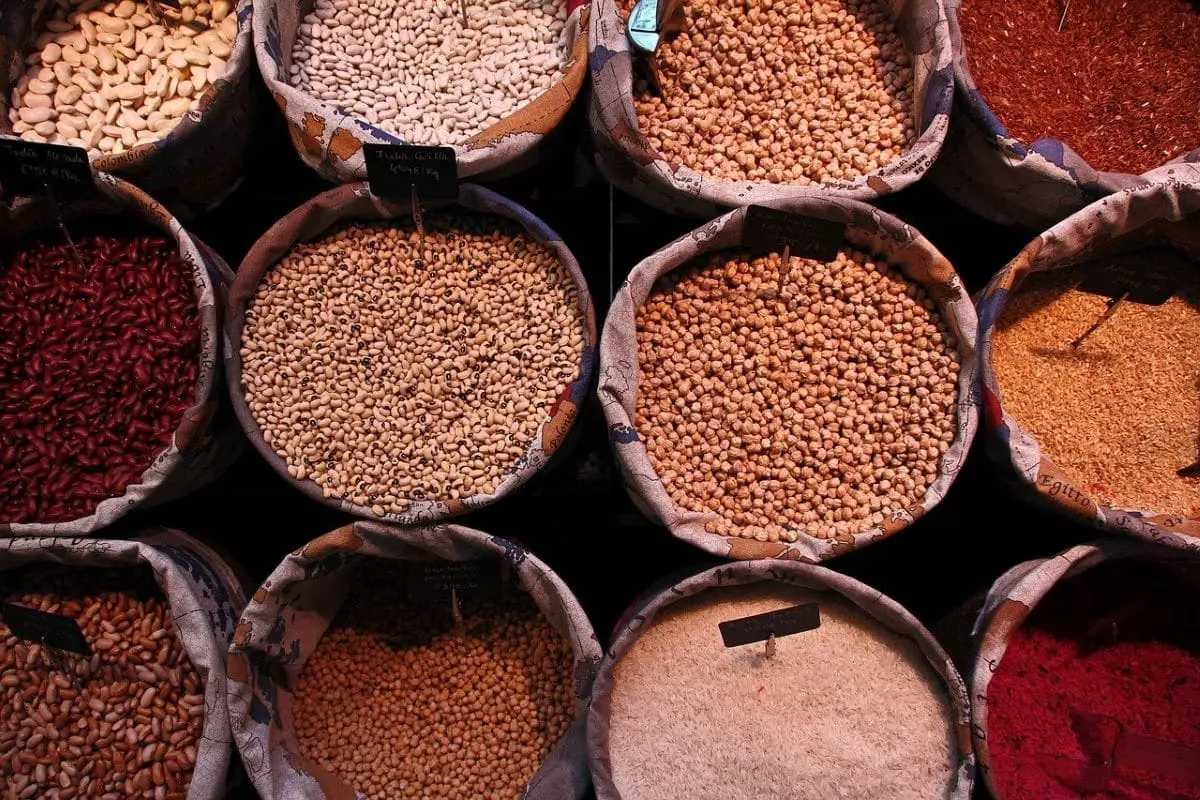
The plants that produce legumes are among the most important for humans; not in vain, who else who least eats from time to time a dish prepared with them. But did you know that there are many different types?
To give you an idea, the Fabaceae, that is, legumes, are a family of plants that consists of 730 genera and more than 19 species. But not all of them are used for consumption. In reality, there are very few that are cultivated for that purpose. Let’s see which are the most consumed types of legumes.
Alfalfa

La alfalfa It is a legume from which we will obtain amino acids, and many different vitamins such as A, B, C or K. As if that were not enough, it contains iron, potassium, calcium and phosphorus. In short, if we include it in the diet We can fight anemia, have a healthier immune system, and improve the symptoms of osteoarthritis.
His scientific name is medicago sativay it is a perennial herb that can live up to 20 years depending on the variety and where it is grown, it reaches 60 centimeters in height. Its flowers are lilac and sprout in clusters.
Peanuts

The peanuts are foods of which we can get a great contribution of magnesium, phosphorus and zincamong others. They also contain vitamins B1, B3 and B5, in addition to fiber. That is, if you are addicted to peanuts you can consume them from time to time, since it is nutritious and prevents cholesterol. Yes indeed, avoid it if you have an allergy to this food.
The peanut plant, whose scientific name is Arachis hypogaeais an annual herb native to America, specifically Peru. It is also known as peanut, and reaches between 30 and 80 centimeters in height.
Chickpeas

The chickpeas they are a food rich in proteins, starches and lipids. It is highly recommended to include it in the diet, as it also helps prevent or treat, as the case may be, constipation by containing fiber.
They are produced by an annual herb, the Lentilwhich is native to the Mediterranean region. Reaches 50 centimeters in heightand it is very interesting because its cultivation can start in late winter or early spring.
Green peas

The green peas, also known as snow peas or peas, are a type of legume that they can help us to have a much stronger and healthier immune system, and also prevent iron deficiency. They are not only rich in this mineral, but also in vitamin C, phosphorus and potassium.
These are the seeds of the annual plant The pea plantwhich grows wild in the Middle East. Has a climbing habitso that when it is cultivated it is essential to provide it with some support such as a lattice or tutors.
Broad beans

Our lima beans they are an interesting source of protein, fiber, vitamins A, C, E and K, and minerals such as calcium, magnesium, phosphorus and potassium. They are, therefore, a type of legume that should not be missing in any diet, since They will help us to strengthen the immune system, and have better digestions.
They are native to the Mediterranean region. These plants are annual cycle herbs, which can reach a height of 1,5 meters. Its scientific name is vecia faba They are not as demanding of water as other types of legumes, so they are highly appreciated in areas where there is little rain.
Jewish

Our Jewish are another type of legumes that It will provide us with fiber, iron, calcium and potassiumamong others. As a curiosity, you should know that it was one of the vegetables that was domesticated nearly ten thousand years ago, during the Holocene, in what is now Mexico, Guatemala and El Salvador.
In Latin America they are often called beans, and in Spain the words beans and beans are common. But in any case, we are talking about an annual herbaceous plant, the Phaseoluswith flowers up to 4 millimeterswhich produce legumes with up to ten seeds.
Lentils

Our lentils They are legumes rich in carbohydrates (sugars and fiber), proteins and vitamins such as B1, B2 and B3; what’s more, provide minerals such as magnesium, phosphorus or even iron. In fact, 100 grams of this food provide us with more than 60% of the iron we need on a daily basis.
They are native to the Middle East, and they are annual herbs whose scientific name is culinary lenseswhat reach a height of 40 centimeters. They produce white flowers and small legumes that contain only about 3 seeds. These are in principle gluten-free, but when grown, they sometimes get ‘contaminated’ with it.
Soybean

La soybean It is a legume rich in fiber, vitamins B6 and K, and in some essential minerals such as iron, magnesium, potassium or zinc. May help lower blood sugar and prevent cardiovascular disorders. In addition, it is interesting to prevent osteoporosis, and even for those who are lactose intolerant and / or want to reduce their consumption of meat, since tofu is obtained from this legume, which not only does not contain lactose but is also rich in protein.
If we talk about the plant that produces it, the Glycinemaxit has to be said that It is an annual herb that reaches between 20 centimeters and one meter in height. Its flowers are purple and small, arising in the axils of the stems. It is native to East Asia.
Which of these types of legumes do you eat most often?

